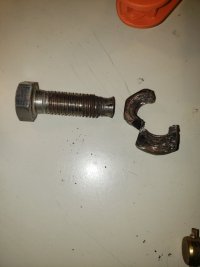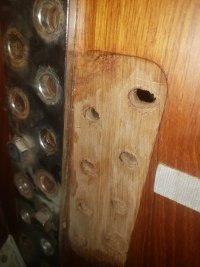Butch Bogan
Member I
Have you removed the bolts for the chainplate going through the bulkhead? Thats quite a bit of rust, I wouldn't be surprised if you have a bit of crevice corrosion going on.
As a side bit of information, I recommend to all of my customers, with boats 30 years old or older, to remove and inspect all chainplates. I've seen way too many that need to be replaced, even after just 10 years, if they're in a high corrosive environment.
As a side bit of information, I recommend to all of my customers, with boats 30 years old or older, to remove and inspect all chainplates. I've seen way too many that need to be replaced, even after just 10 years, if they're in a high corrosive environment.



